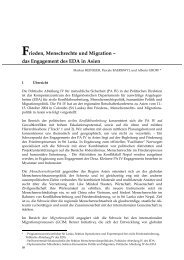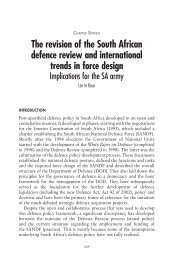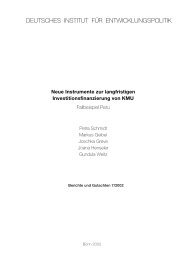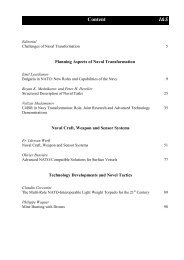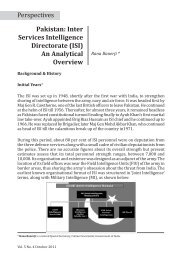Andreas Stamm Eva Dantas Doris Fischer Sunayana ... - ETH Zürich
Andreas Stamm Eva Dantas Doris Fischer Sunayana ... - ETH Zürich
Andreas Stamm Eva Dantas Doris Fischer Sunayana ... - ETH Zürich
You also want an ePaper? Increase the reach of your titles
YUMPU automatically turns print PDFs into web optimized ePapers that Google loves.
<strong>Andreas</strong> <strong>Stamm</strong> et al.<br />
responsibility of policy making are especially important. This brings up the question: How<br />
can policy contribute specifically to the formation and strengthening of sustainability-oriented<br />
innovation systems?<br />
Proceeding from the transition literature (4.2.1) and the research on sustainability innovation<br />
policy regimes (4.2.2), it is possible to derive some provisional considerations on<br />
how SoIS can be conceptualised. On the supply side of the innovation system, government<br />
action is needed to ensure the provision of training for a sufficient number of people<br />
able to develop, deploy and master clean technologies. As regards the qualitative<br />
orientation of human resource formation, it will be important that a sufficient variety of<br />
training profiles is achieved in order to break out of (or avoid) path-dependent development<br />
and ensure that a set of technology options will have the opportunity to mature,<br />
first in specific niches, with the possibility to challenge less sustainable development<br />
paths. Traditional engineer-type technology experts will have to represent important<br />
components of the human resources base. However, the complexity of sustainability<br />
challenges also requires non-traditional and interdisciplinary approaches, including linking<br />
“hard” sciences with social sciences, which can provide knowledge on how new solutions<br />
may be adopted swiftly by societies.<br />
As in the case of human resource development, funding and governance of research and<br />
development will also need to assure sufficient variety in technological options, especially<br />
as long as levels of uncertainty about potentially successful trajectories remain<br />
high. Under the conditions of limited public R&D budgets, this implies developing funding<br />
schemes with high leverage effects – regarding the scale of R&D undertakings, but<br />
also regarding the creativity induced by the programmes.<br />
The term Valley of Death denotes the gap arising between public funding of basic research<br />
and private funding of close-to-commercial technologies, i.e. mobilising funding<br />
for demonstration projects and pre-commercial undertakings (Etzkowitz 2006, 314). It<br />
does not come as a surprise that this problem in technology development has also been<br />
identified in the case of SoIS (see Foxon et al. 2005a). As regards sustainability-oriented<br />
innovation, viewed from a public goods perspective, the risk that potentially feasible<br />
innovations may “die” in the Valley of Death or that their maturation process may be<br />
significantly delayed should clearly be avoided. Bridging the Valley of Death requires<br />
significant funding, as technological demonstration projects tend to require high upfront<br />
investment. In the context of anchor countries, as large and powerful but still relatively<br />
poor developing countries, this raises the question whether large-scale funding for<br />
bridging the Valley of Death in sustainability oriented technologies can be expected<br />
to be mobilised at the national level and how international and especially multilateral<br />
efforts might possibly serve to flank these efforts.<br />
Due to market failure in sustainability technologies, demand-side measures and market-creating<br />
policies may be seen as especially important features of SoIS. Here government<br />
regulations and incentive schemes are crucial. In the case of renewable energy<br />
technologies, feed-in tariffs have proven to be a very powerful instrument in a number of<br />
industrialised countries (Medonça 2007, 76-86). A number of developing countries, such<br />
as South Africa, have adopted feed-in tariffs to promote renewable energies. However,<br />
in this case and with regard to other incentive and regulation schemes, it would be im-<br />
30<br />
German Development Institute / Deutsches Institut für Entwicklungspolitik (DIE)






